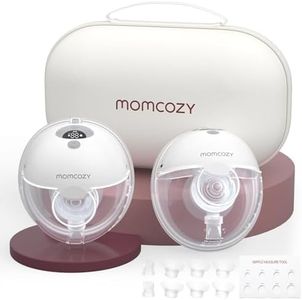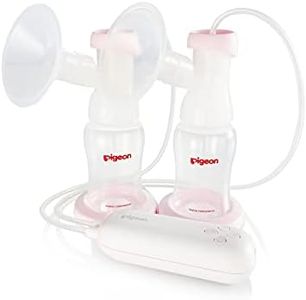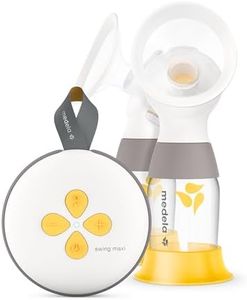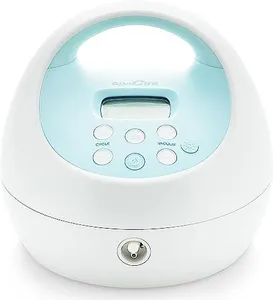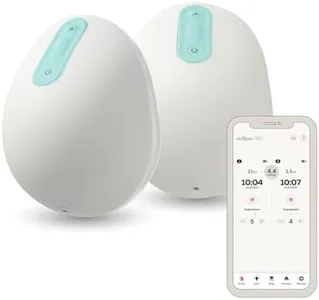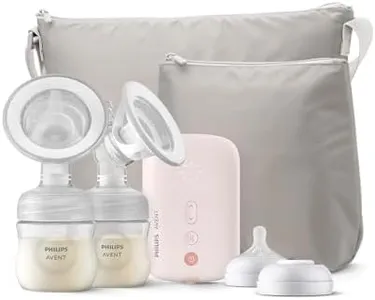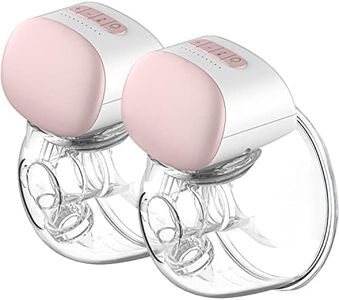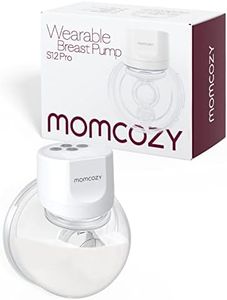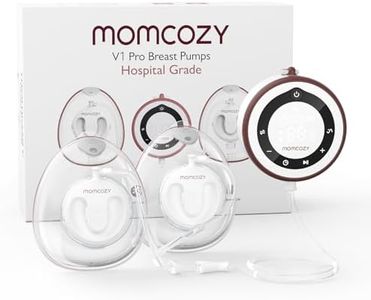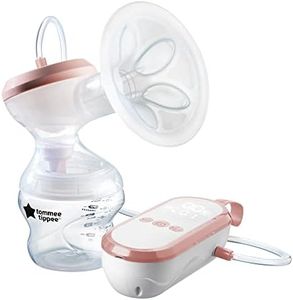We Use CookiesWe use cookies to enhance the security, performance,
functionality and for analytical and promotional activities. By continuing to browse this site you
are agreeing to our privacy policy
10 Best Electric Breast Pumps
From leading brands and best sellers available on the web.Buying Guide for the Best Electric Breast Pumps
Choosing the right electric breast pump is a crucial decision for many nursing parents. A good pump can save time, offer convenience, and help maintain your milk supply. Since everyone’s needs and daily routines are different, it’s important to focus on a few key features when comparing different options. Understanding how each feature impacts the pumping experience will allow you to find a pump that matches your lifestyle and comfort level.Suction Strength and AdjustabilitySuction strength refers to how powerful the pump’s motor is at drawing out milk, and adjustability means you can change the suction to match your comfort. This spec is important because too much suction can be uncomfortable, while too little may not express milk effectively. Generally, pumps offer different suction levels: low settings are gentler and ideal for sensitive users or initial let-down, medium is suitable for regular pumping, and high is for quick, efficient sessions. Think about your comfort and how often you’ll pump; if you’re sensitive or new to pumping, choosing a pump with highly adjustable suction is a good move.
Portability and SizePortability describes how easy the pump is to carry and use away from home, while size relates to the pump’s form factor. Some pumps are built for home use and are larger, while others are compact or wearable for discretion. If you’ll pump primarily at home, a larger, more robust pump could work well. For pumping at work, when traveling, or on-the-go, a smaller, lightweight, or wearable pump will be more convenient.
Power SourceElectric breast pumps can be powered by wall outlets, batteries, USB, or a combination of these. A fixed power source means you’ll need to be near an outlet, which limits mobility but may provide consistent performance. Battery-operated or USB-powered models offer flexibility and are useful if you are frequently away from home. Decide based on where and how you plan to use the pump most often.
Noise LevelNoise level indicates how loud the pump is during operation. Quieter pumps are important if you need to use the pump at work, during the night, or in shared spaces. Pumps generally range from nearly silent to noticeably noisy; if discretion or nighttime use is a priority, look for pumps known for quietness.
Single vs. Double PumpingSingle pumping means you can pump one breast at a time, while double pumping allows both breasts to be expressed simultaneously. Double pumping is usually faster and can help increase milk output, making it a great option if you need to save time or maintain supply. Single pumping might be enough for occasional or light users, or if you wish to nurse and pump simultaneously.
Ease of CleaningThis refers to how many parts the pump has and how easy it is to take apart and clean. Pumps with fewer parts are quicker to wash and reassemble, which saves time and effort, especially with frequent use. Consider how often you’ll be pumping and how much time you want to spend cleaning; if convenience is key, choose one with a simple assembly.
Flange Size and ComfortThe flange is the part that fits over your breast. It’s important to have the right size and a comfortable design, as a bad fit can cause discomfort or reduce milk flow. Pumps may come with multiple sizes or offer soft, cushioned edges. If you experience discomfort during pumping or have unusual nipple or breast sizes, prioritize a pump that provides sizing options and comfortable flanges.
